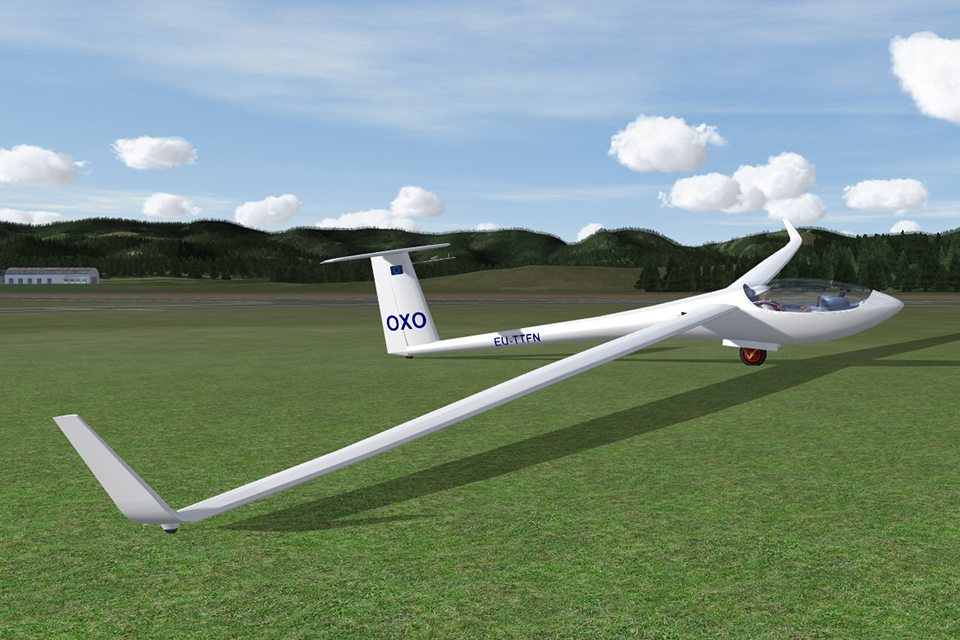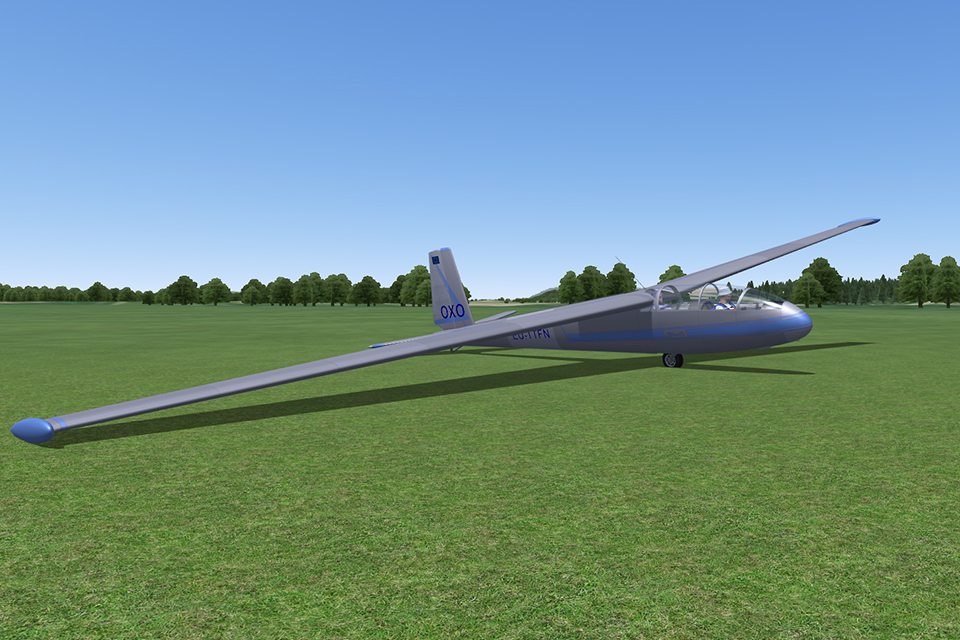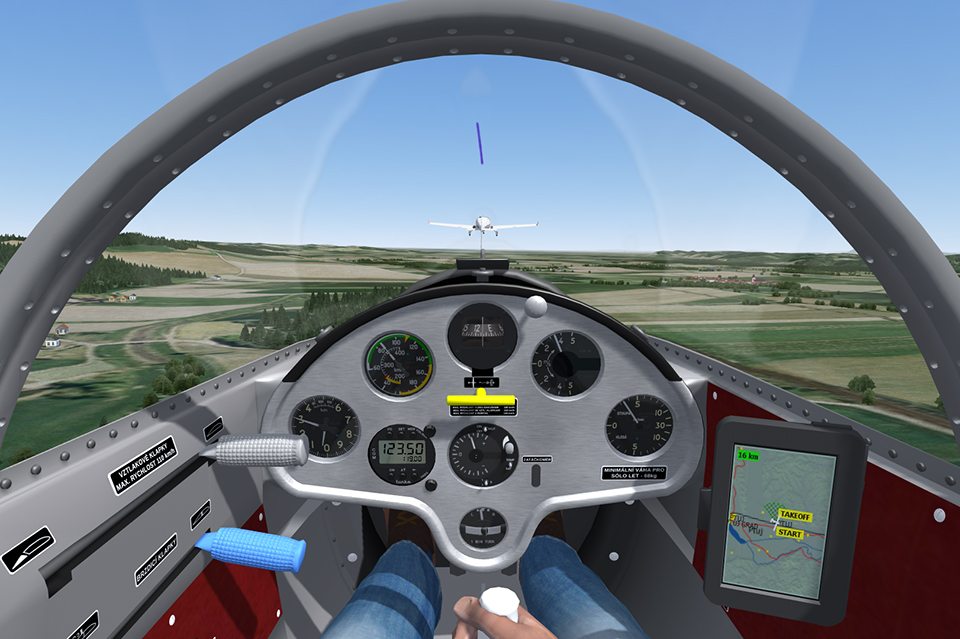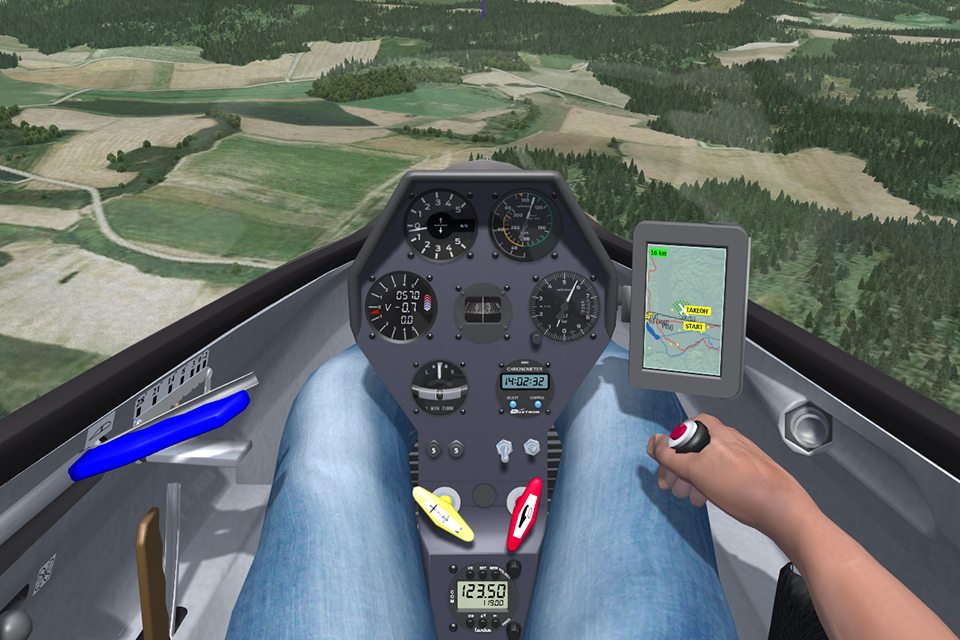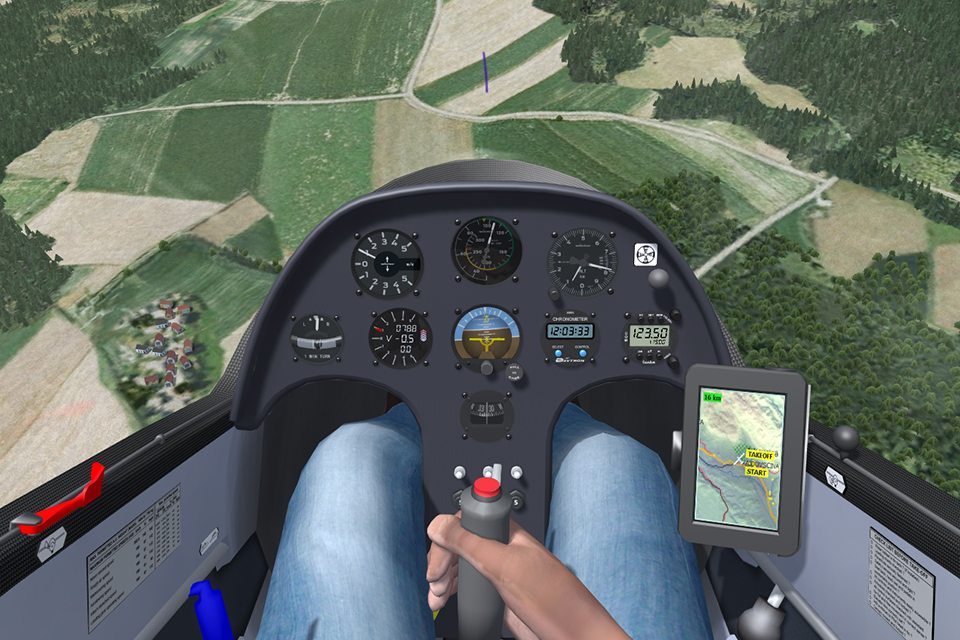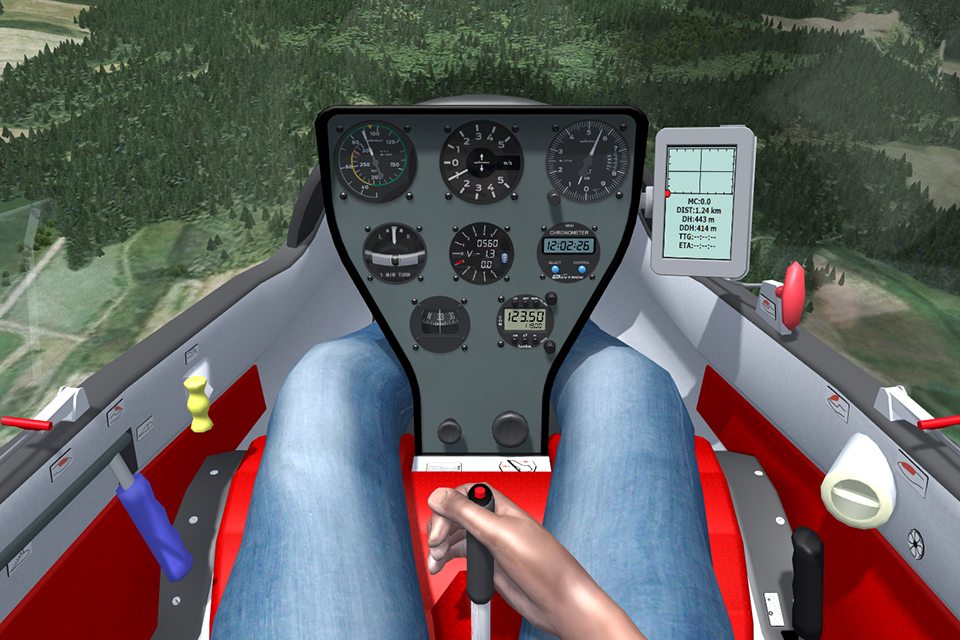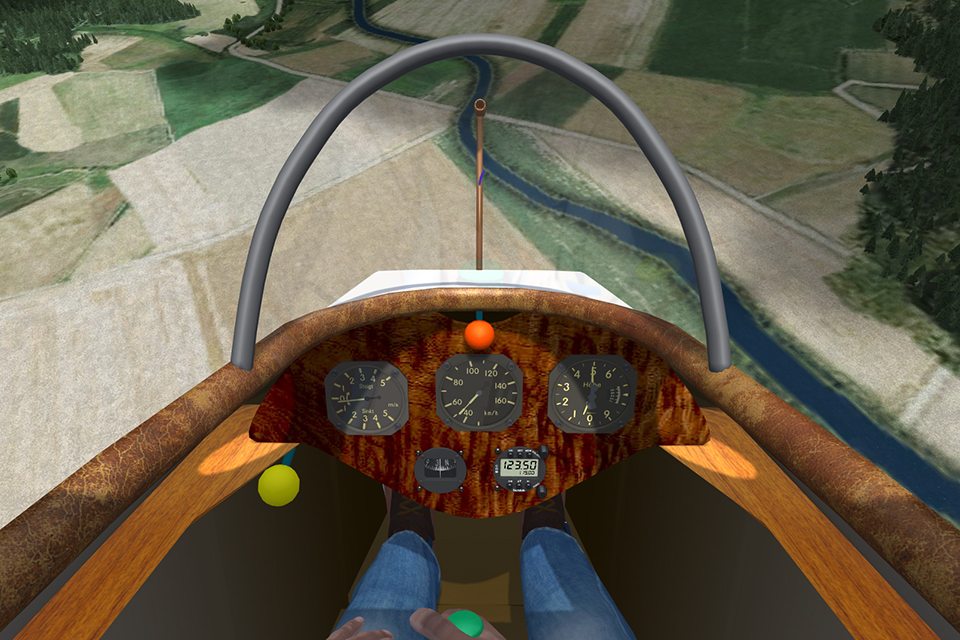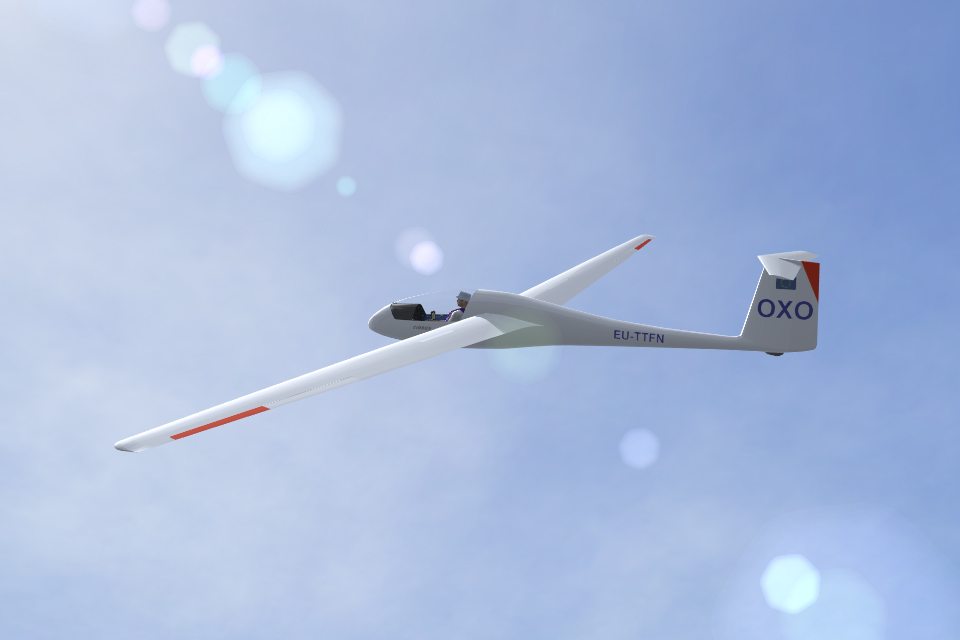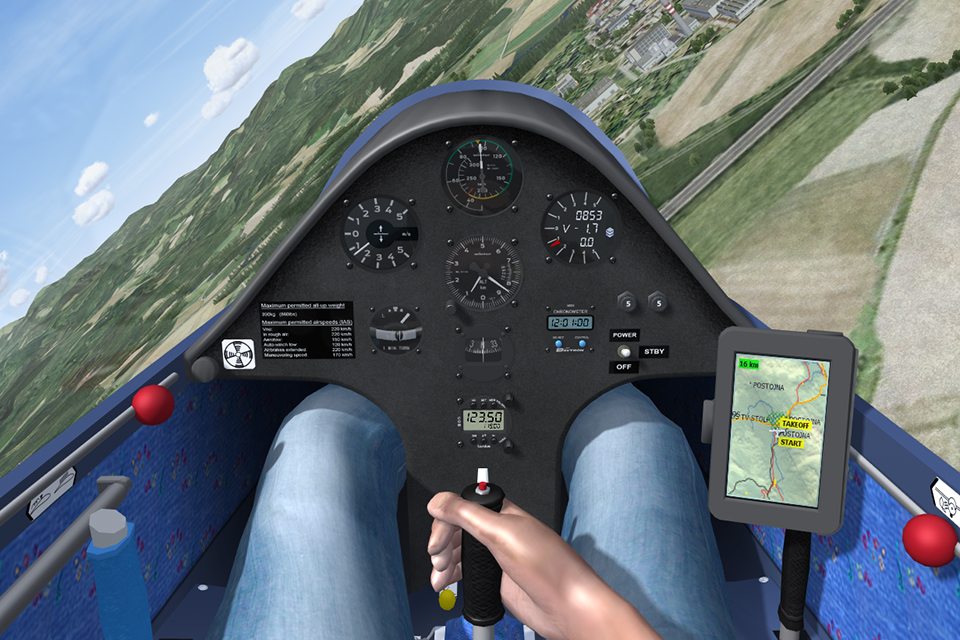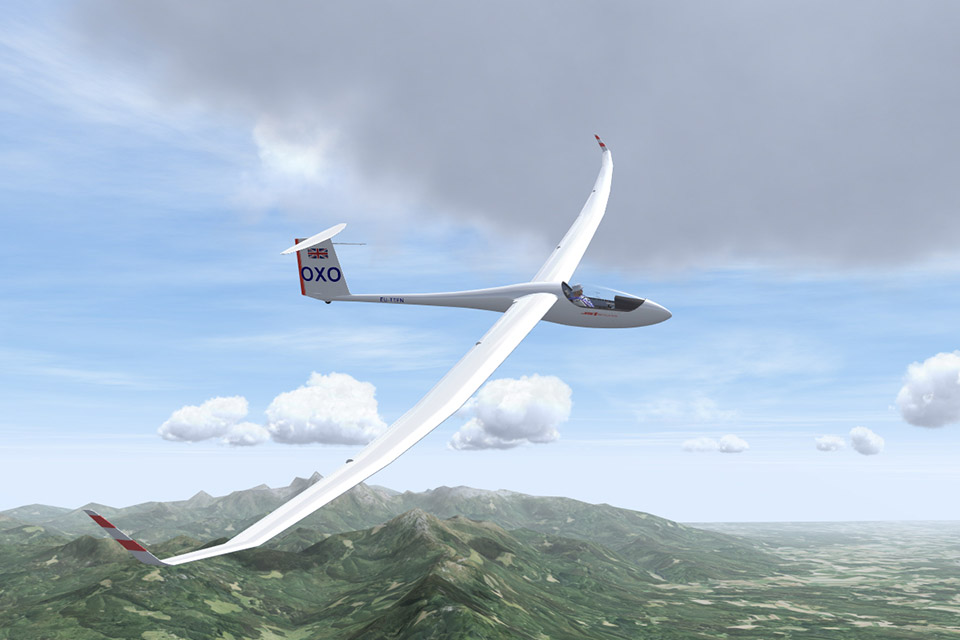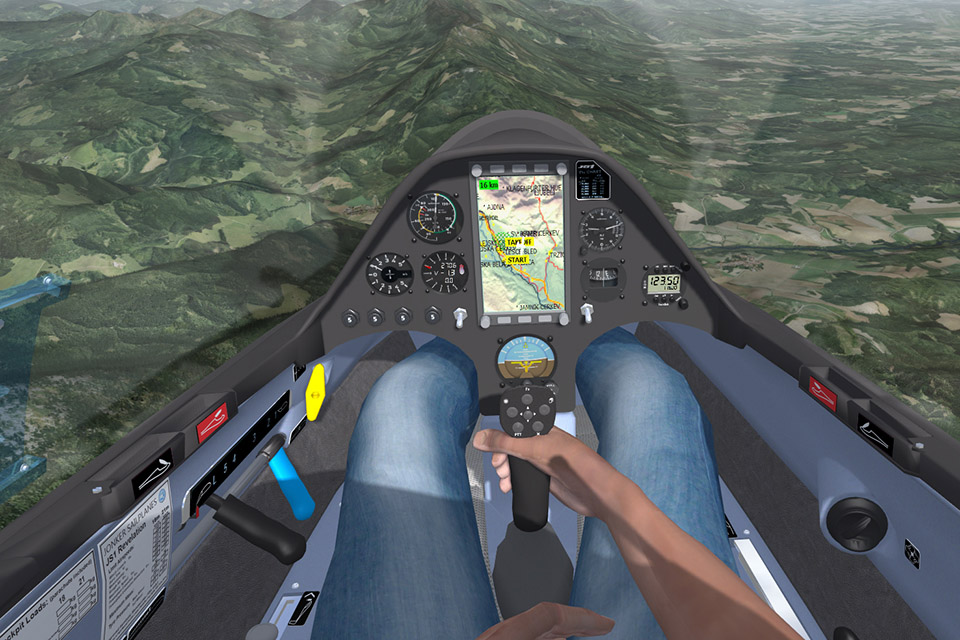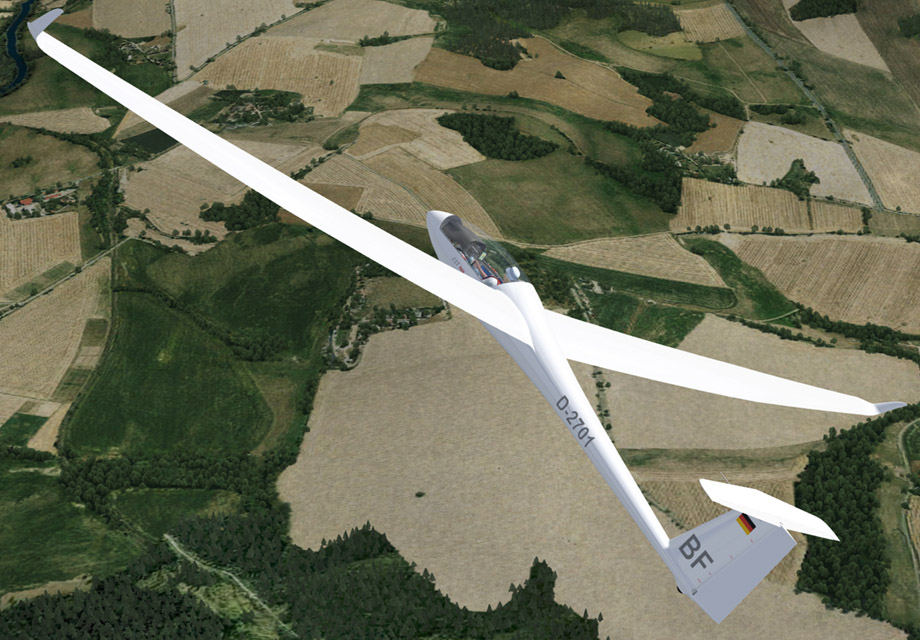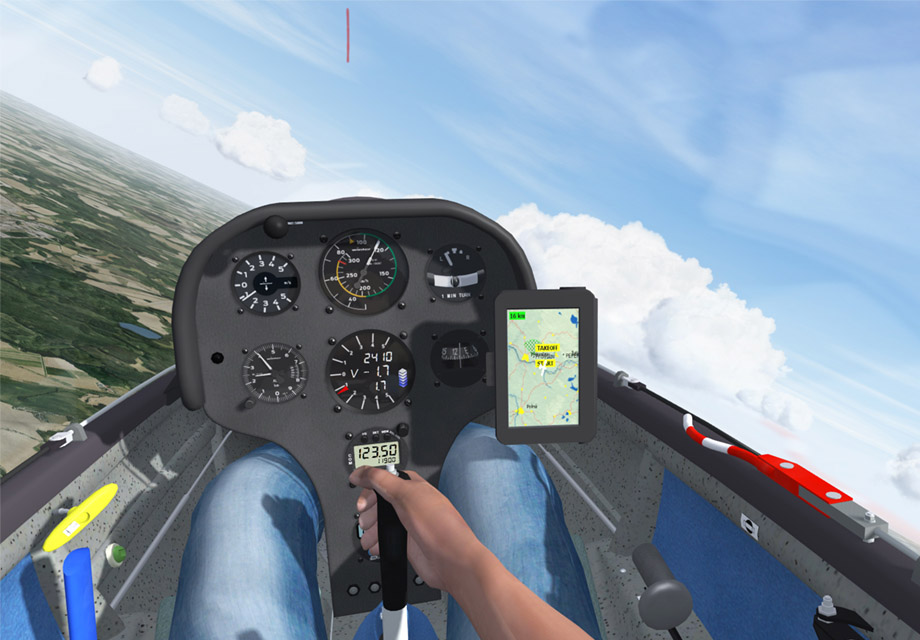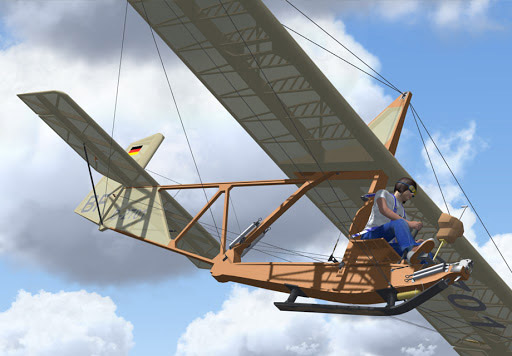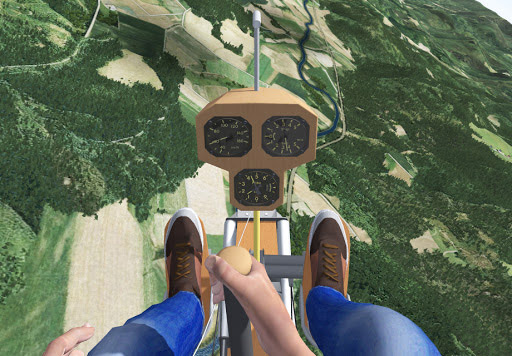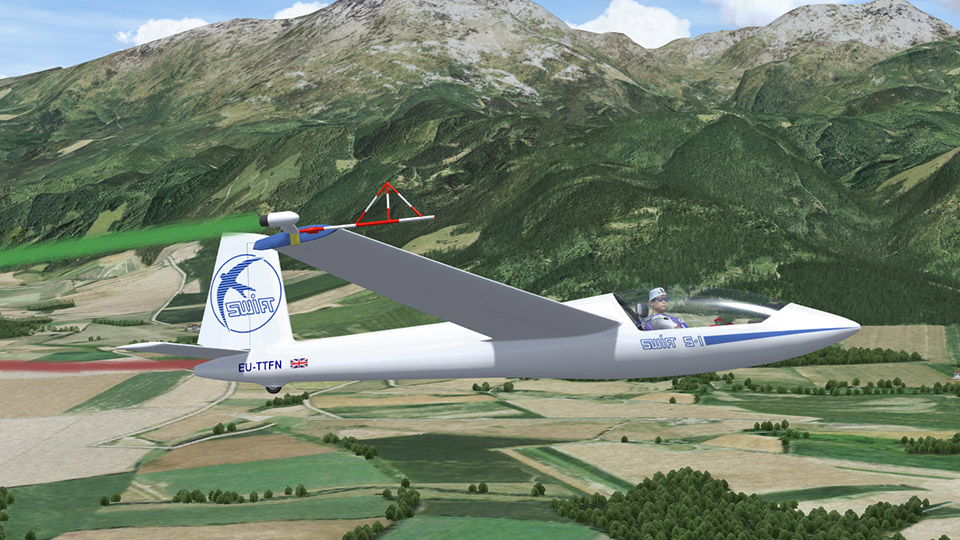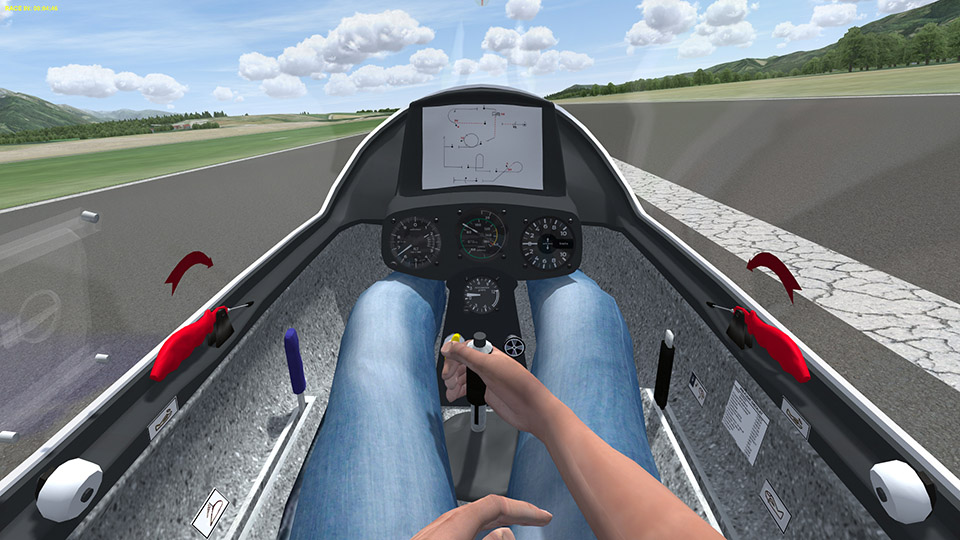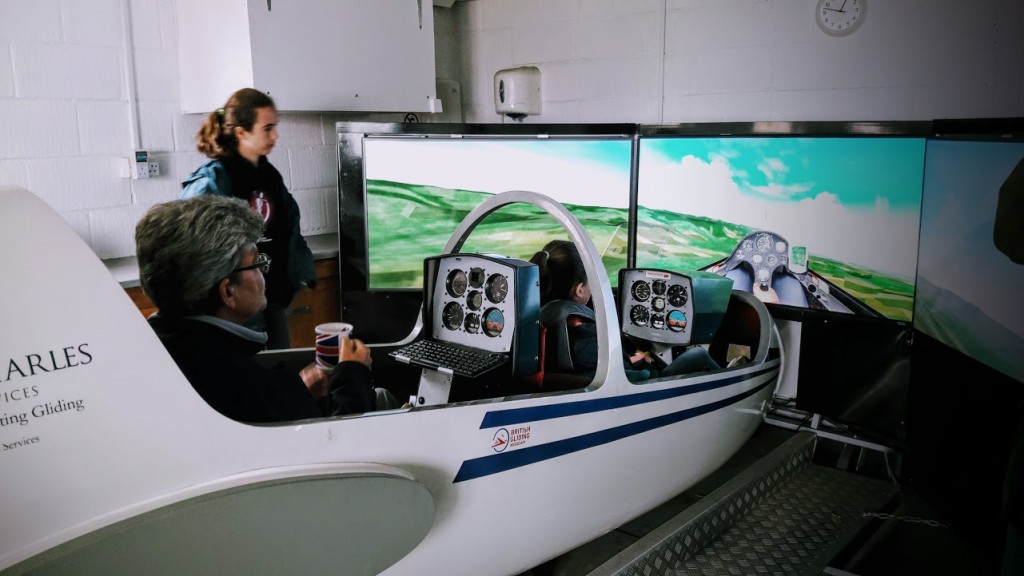Read before Purchasing.
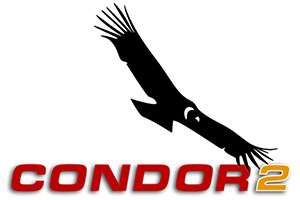 Soaring Flight Simulator for PC
Soaring Flight Simulator for PC
Overview | Sailplanes | Screenshots, & Videos | Flight School, Soaring & Racing |
System Requirements, Hardware Recommendations & Keyboard Commands | Links, Tips & Documents
Optional Add-On Planes (extra cost)
Flight School
The lessons are split into 4 phases:
- Basic
- Preflight Check
- Effects of Commands
- Turns
- Winch Launching
- Aerotow launching
- Traffic pattern(circuit) and landing
- Winch launch failure
- Intermediate
- Thermal Soaring
- Ridge Soaring
- Wave Soaring
- Upslope Winds
- Advanced
- Starting task and navigation
- Speed-To-Fly - MacCready Theory
- Final Glide
- Acro
- Loop
- Stall Turn
| Apple Mac |
Hardware Recommendations
For the ultimate experience we recommend using rudder pedals and a joystick with force feedback. Since Condor supports multiple input devices, you can create real analogous controls for all glider controls.
I am often asked to recommend a joystick and rudder pedals for use with Condor. Below are a few good options which are recommended by myself or other Condor users.
To be able to fly in Condor, you do not need a joystick. The glider can be controlled using mouse or keyboard. However we do strongly suggest that you should use at least a joystick with a twist rudder support.
Joystick
The Logitech Extreme 3D Pro Joystick seems to be the joystick of choice for most Condor users - including myself. It is a nice, low cost option. It has a twist handle which is great for rudder control if not using rudder pedals. If you are using rudder pedals you won't need the twist feature, but it won't hurt either. Details are available in the price list below.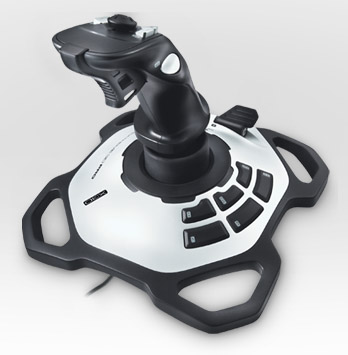
Rudder Pedals
Many experienced Condor users and recommend the Logitech or Thrustmaster rudder pedals. They are highly recommended when practicing cross-wind take-offs and landings, slips, skids, slow flight, stalls, spins, and aerobatics. Details are available in the price list below.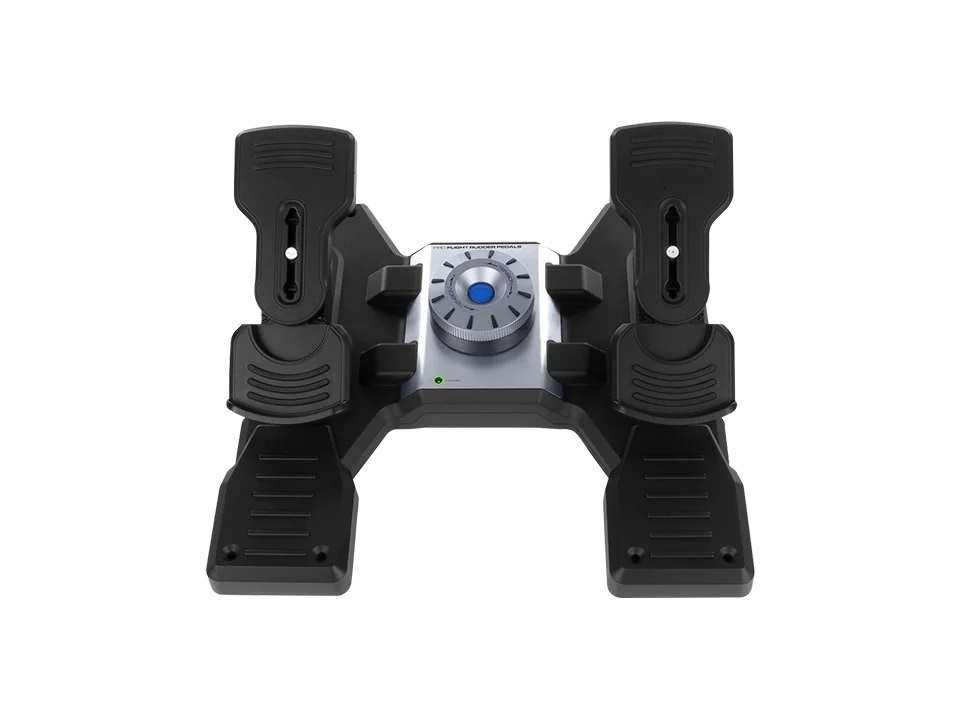
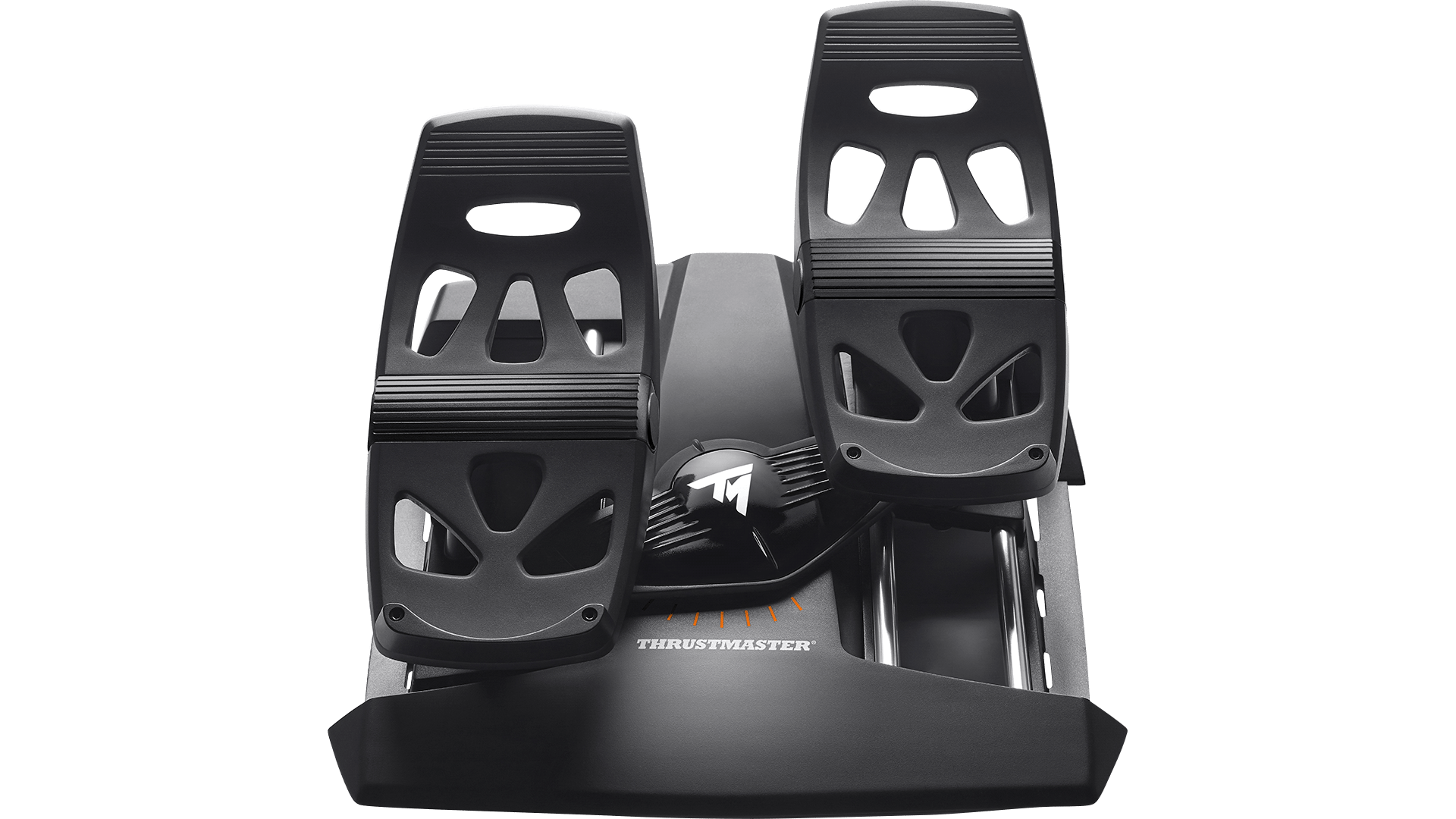
Are Rudder Pedals Necessary When Using Condor?
I am often asked whether rudder pedals are required, or highly recommended, or...? My opinion, and the opinion of several experienced Condor users is:
- Rudder pedals are not absolutely necessary. Most joysticks offer a twist action that can be used for rudder control, or you can enable "auto-rudder" in Condor.
- Rudder pedals are very highly recommended for anyone using Condor to learn how to fly gliders, or using Condor to practice flying skills such as cross-wind take-offs and landings, slips, skids, slow flight, stalls, spins, or aerobatics.
- Rudder pedals are probably not necessary for cross-country soaring and contest flying. Experienced users tell me that they enable the "auto-rudder" feature when flying cross-country or racing - because it is more about how you find lift and how fast you fly than about how well you work the rudder.
Keyboard Commands - Commonly Used
|
- Condor2 web site
- Condor2 Downloads
- Condor2 Manual - Click on the small PDF icon at the top-right of the page to view and download and print the entire manual as a PDF file.
- Condor2 News
- Condor2 Forums
- Scott Manly's - Simulation-based Glider Flight Education - http://glidercfi.com/ - dedicated to the use of simulation in soaring instruction
- Frank Paynter's - Condor Cross Country Soaring Center http://www.condorxcsoaring.com/
- CondorWorld - Quality, highly detailed handmade commercial landscapes with 3D objects for Condor 1 and Condor 2
- CondorClub - Almost all free landscapes are available to be downloaded at Condor club. New U.S. sceneries for Condor 2 include Nephi, Utah, and Seminole Lake, Florida.
- Monday Night Soaring Contest - USA, Europe and "Pacific" - Several contests at times that work for U.S. pilots
- gliderracing.com - Nightly online Condor simulator contests with downloadable scenery - USA
- Sceneries are also available at: http://www.gliderracing.com/pub/sceneries.aspx. For the U.S. they offer sites in central Florida, the Pennsylvania ridges, New Mexico, Appalachia, Montana (Glacier Park), Sierra Nevada, Mifflin, PA, Rio Grande (Texas and Mexico), the Pacific Northwest, and several others.
- Post Frontal
Manual
Online Condor2 Manual - Click on the small PDF icon at the top-right of the page to view and download and print the entire manual as a PDF file.
*** The documents below were written for the original version of Condor - not Condor2. However, they are about 95% accurate for Condor2.
Tips
CondorTips - by Paul Remde
Condor Orientation - by Scott Manley
Getting Started with Condor Soaring Simulator - by Frank Paynter
Condor Corner Articles
Frank Paynter and Scott Manley are writing an excellent column for Soaring magazine called Condor Corner. Many of their articles are available here:
CondorCorner-2010-04.pdf - An Introduction to Condor Corner and Condor, by Frank Paynter and Scott Manley
CondorCorner-2010-05.pdf - What’s the problem? (Airplanes make lousy classrooms, Classrooms make lousy aircraft), by Scott Manley
CondorCorner-2010-07.pdf - Condor as a Competition Trainer, by Frank Paynter
CondorCorner-2010-08.pdf - Why Glider Flight Simulation?, by Scott Manley - CFIG
CondorCorner-2010-09.pdf - Parowan, Utah and Condor, by Frank Paynter
CondorCorner-2010-10.pdf - Glider Flight Simulation and the Curriculum, by Scott Manley - CFIG
CondorCorner-2010-11.pdf - Setting up and flying a short cross-country flight, by Frank Paynter
There are no products to list in this category.

